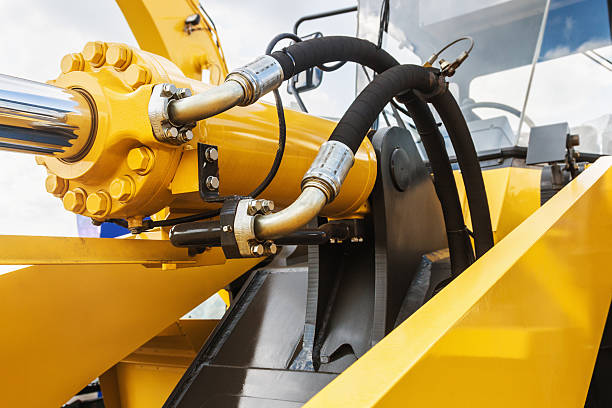Industrial equipment is only as reliable as its lubrication. Yet lubricants are often an afterthought, neglected until serious problems arise. With heavy machinery downtime costing thousands per hour, the consequences of poor lubrication quickly multiply.
In fact, lack of proper lubrication causes up to 80% of all bearing failures and similar high percentages for other components. The impacts cascade through operations via breakdowns, production delays, added maintenance costs and shortened equipment life.
Fortunately, a diligent lubrication program maximizes machinery efficiency while minimizing operational costs. When leveraged fully, high-performance lubricants are a valuable asset for maintenance teams.
Reducing Friction and Wear
The foremost job of any lubricant is reducing friction between moving parts. Limiting metal-to-metal contact cuts down on component wear, overheating, and seizures. Industrial lubricants keep gears, bearings, slides, and other elements moving freely despite heavy loads. This smooth motion prevents premature breakdowns.
Well-lubricated parts see far less abrasive damage over time. They retain precise tolerances longer before needing replacement. This substantially extends equipment lifespan. Money saved from fewer new parts and less downtime for repairs goes straight to the bottom line.
Sealing Out Contaminants
Lubricants also play a vital role in sealing components against external contaminants. Oils and greases prevent dust, particulates, moisture, and other debris from entering. Clean lubrication is especially critical for tight tolerance hydraulic systems. Keeping out contamination avoids sticker valves, scored cylinders, and accelerated pump wear. This protection against dirt, water and particles translates to more years of normal operation.
Preventing Corrosion
In addition to wear and contaminants, lubricants defend against oxidation and corrosion. Acid byproducts are neutralized. Rust and residue buildup are inhibited. This preserves surfaces and internal passages. Components stay clean and free of varnish deposits that impede function.
Corrosion prevention provides huge cost savings compared to repairs or replacements when parts degrade. It also maintains equipment efficiency by avoiding performance losses as components corrode.
Optimizing Energy Usage
Reduced friction from proper lubrication directly improves energy efficiency. Bearings and gears turn freely rather than fighting excess drag. Pumps don’t labour against stiction. Motors consume less electricity to operate.
All this cuts energy expenditures and lowers costs. Efficiency gains can be substantial for heavy machinery and high-cycle applications. Lubrication is a proven way to get more productivity per energy unit.
Proper Lubricant Application
Getting lubricants to where they are needed when they are needed is critical too. This requires proper application methods and maintenance procedures.
- Greases – Follow recommended regreasing amounts and intervals. Avoid under or over greasing. Use manual or automatic dispensing tools, not just hands, for precision. Match grease consistency to application.
- Oils – Maintain levels appropriately. Check reservoirs and top up frequently. Ensure cap seals and breathers are intact. Verify OEM fill amounts to avoid under or overfilling.
- Component lubrication – Oil rings, chain drives, slides and other moving parts using drip feeders, wicks, and micro-dosing systems for continuous coverage.
- Change intervals – Stick to OEM guidelines on complete fluid changes to avoid degradation. Log hours on high-use equipment.
- Contamination control – Use filters, screens, and oil analysis to monitor conditions and cleanliness. Promptly address water ingress or particulate accumulation.
With training and adherence to procedures, lubricants reach intended components in optimal condition. This prevents inadequate coverage or surface chemical changes from delayed replenishment.
Storage and Handling
Proper handling and storage safeguards lubricant quality before use. Containers should seal fully and clearly label contents. Segregate by oil type. Eliminate all outside moisture and dirt ingress opportunities. Avoid overheating lubricants which accelerates degradation. Adhere to a first-in, first-out (FIFO) stock rotation system.
Training Maintenance Teams
For successful execution, lubrication practices must be ingrained in maintenance personnel. Training should cover below.
- Lubricant selection for equipment
- Visual inspection procedures
- Contamination detection
- Sampling techniques
- Replenishment and change systems
- Recordkeeping
With comprehensive understanding of lubrication programs, reliability improves greatly. Equipment costs drop alongside unplanned downtime.
Partnering With Lubricant Experts
For in-depth guidance on maximizing the benefits of lubrication, partner with a specialty lubricant supplier. Look for customized product recommendations, staff training, ongoing support services, and expertise tailored to your specific operation. The right partnership optimizes the lubrication program so that equipment runs smoothly for the long haul.
In today’s demanding industrial environments, proper lubrication is more pivotal than ever. When leveraged effectively, it not only extends asset life and efficiency, but directly improves the bottom line through cost reductions. By making lubricants a priority, manufacturers can reach new heights of reliability and profitability.
Lubrication Excellence
Leading manufacturers treat lubrication as a core competency versus an afterthought. They integrate it deeply into reliability programs under the larger umbrella of asset management.
This means having lubrication experts on staff or as consultants. It means training teams extensively on lubrication best practices. And it means seeing lubricants as strategic assets that enable broader success.
With this mindset, plants opt for condition monitoring over fixed change intervals. They focus on purity control and root cause failure analysis. Data guides proactive lubricant decisions rather than reactive fixes.
And this lubrication excellence delivers results. One steel mill increased bearing life 300% through a targeted program. A paper plant achieved US$200,000 in annual savings after improvements. Similar success awaits manufacturers who emphasize lubrication.
Because done right, lubricants are not a maintenance cost but an investment. They pay dividends in equipment longevity, efficiency, safety, and productivity. And those benefits ultimately transcend any upfront expenditures for workers, facilities, and companies alike.
The Role of Quality Lubricants
Realizing these benefits relies on premium lubricants engineered specifically for industrial uses. General purpose oils break down quickly under extreme pressures, temperatures, loads and runtimes.
Synthetic oils allow wider temperature ranges. Fortified anti-wear additives handle heavy loads. Special coatings protect in corrosive atmospheres. There are even food-grade and non-conductive oils for unique applications.
The right lubricant reduces maintenance costs and energizes bottom lines. With an upfront investment in quality lubricants, equipment lasts longer and performs better for years down the road.


